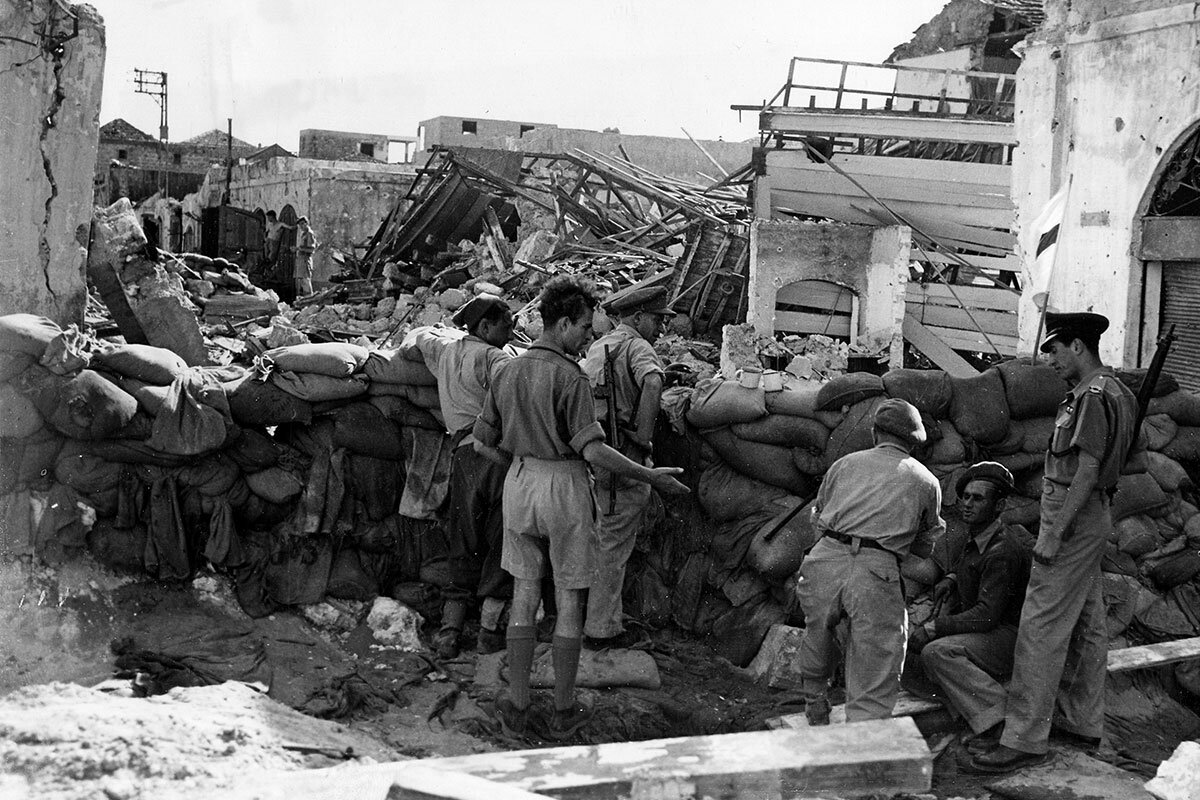For Israeli-Palestinian peace, a precursor: Mutual understanding
Loading...
| London
Two states for two peoples. That long-sought vision for Israeli-Palestinian peace has taken on new life this week in the wake of another costly yet inconclusive military showdown over Gaza.
But in reflecting on this latest round of violence – after some 45 years of living with, reporting on, and writing about both sides in the conflict – I’ve found myself wondering whether the ultimate challenge, and eventual path to peace, may not lie elsewhere.
Not two states, but two stories. Finding some way for Israelis and Palestinians to bridge the chasm between the deeply embedded, separate, and parallel narratives they’ve each told themselves about their history and place in the land they both passionately claim as their own.
Why We Wrote This
What if peace between Israelis and Palestinians can only be achieved if each side appreciates the other’s national story about their ties to the same land? The recent fighting has given impetus to those seeking such understanding.
A two-state agreement would be challenging enough. Serial efforts over the three decades since the Oslo Accord have all ended in failure.
That doesn’t mean another effort isn’t worth making, especially amid signs in recent days of the Biden administration’s support. It surely holds greater promise than the diplomatic vacuum that has stifled Israeli-Palestinian relations in recent years.
But the divide between rival Israeli and Palestinian narratives runs deeper.
Perhaps nowhere is it more stark than the way in which each people views the 1948 creation of the State of Israel, its eventual borders staked out at gunpoint and defended against the invading armies of neighboring Arab states.
For Israelis, it was the War of Independence, sparked by Prime Minister David Ben-Gurion’s declaration of statehood on the basis of a United Nations resolution.
The Palestinians call it simply al nakba: the catastrophe. In their narrative – perpetuated not just by political or religious leaders but within families, from generation to generation – it was a disaster to be rectified. Somehow. Sooner or later.
But that’s only part of the way in which their national stories diverge.
For Israelis, the state is inseparable from Jewish history: the 2,000-year-old temple in Jerusalem, a remnant of which, the Western Wall, survives; the centuries of dispersal and diaspora; and of course the antisemitism in those distant lands, no matter how loyal and valuable Jews were as citizens – a scourge culminating, just a few years before Israeli statehood, in the Nazis’ mass murder of millions.
For Palestinians, the story is of a fundamentally alien new state from which hundreds of thousands, whether out of fear or by force, fled during the war of 1948, abandoning their ancestral homes.
So in a sense, both people tell a story – in the Palestinians’ case, as yet unfulfilled – of triumph over suffering in a single, small patch of land on the eastern edge of the Mediterranean.
The greatest obstacle to accommodating both narratives is not that they’re different. It’s that most Israelis and Palestinians don’t accept, or in many cases don’t even know, each other’s national story.
So how does that change?
For years, the mere scale of the challenge has dulled me to the small, if undeniably admirable, initiatives that Israelis and Palestinians have taken over the years to meet one another, cross boundaries, talk, and more importantly, listen.
Still, little by little in recent years, those embers have been spreading. And they actually seem to gain momentum after each new bout of violence, even if the fighting is a reminder of how distant a final political resolution of Israeli-Palestinian differences remains.
This week, I joined a Zoom discussion with dozens of Israeli and Palestinian parents who had lost a child to the conflict. I heard them speak movingly of how life-affirming they had found their engagement with the common loss, pain, and shared humanity of those similarly bereaved “on the other side.”
My Monitor colleague Dina Kraft has told the story of how, after the last Gaza war in 2014, right-wing Jewish vigilantes mounted an arson attack on a school in Jerusalem where Arab and Jewish students were learning together, jointly taught by Arab and Jewish teachers in both Arabic and Hebrew. The attack could have meant the end of the initiative. Instead, the school has flourished, and other similar establishments have sprung up elsewhere in Israel.
One detail from her visit to the Jerusalem school a couple of years ago has stuck with me: the way in which both Independence Day and Nakba Day are marked – first with separate assemblies of the school’s Jewish and Arab children and teachers, then with a coming together in which they all celebrate and discuss that which binds them together.
Replicating that approach more widely is a tall order, especially at a time of increasingly extreme political views. It won’t be easy. It won’t happen quickly.
But perhaps there was one signpost pointing the way forward in a chatroom discussion on the Clubhouse app that brought together Israelis and Palestinians during last week’s Gaza fighting. In the interests of civility, participants were urged to focus on telling their own personal stories of the conflict.
And, in the words of a chatroom moderator, to remember that “trauma isn’t owned by any one narrative.”







